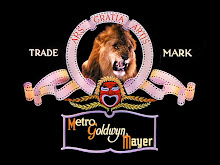Monday, June 4, 2012
The Four Horsemen of the Apocalypse (1921)
Although originally released by Metro in 1921, The Four Horsemen of the Apocalypse was rereleased by MGM in their first year in business, 1924.
A long (132-minute) tale of two generations of a splintered, warring family, The Four Horsemen is primarily known today as the film which made Rudolph Valentino famous. He plays a rich, spoiled wastrel through much of the film, until he falls in love (with a married woman) and attempts to redeem his sorry life by joining the French infantry in WWI.
Directed by Rex Ingram, the story is hokum, pure and simple, complete with a pious, emotionless, creepy Nostradamus/Christ figure (one of several who pop up in MGM silent films when sanctimonious sentiment is needed) who foretells days of apocalyptic wrath and brotherly love.
The movie is, though, good, old-fashioned Hollywood spectacle. The sets are gargantuan, filled with the kind of mysterious clutter you only see in silent movies. The themes are large, accented by color-tinted images of Hell. And, with The Four Horsemen of the Apocalypse, you get a star in the making. The very first scene Valentino appears in, rakishly stealing another man's vampish date to dance a tango with, is alive, smoldering and timeless in a way most of the rest of the movie isn't. The scene has "classic" written all over it.
Be prepared to slog through a lot of the second half of the film, though. You know you're getting starved for entertainment when your eyes light up at a lost monkee jumping out of a handbag.
You do get to see Wallace Beery and Alan Hale playing evil German scavengers and the film's love interest, Alice Terry, has an acting style more subtle than you often see in silent films.
The Four Horsemen of the Apocalypse has not been released on DVD. The version shown on Turner Classic Movies, a Photoplay production with a grand orchestral score by Carl Davis, is the one to beat. Amazon is selling an on-demand DVD-R version with a simpler score. I recommend holding out for the TCM version.
Subscribe to:
Posts (Atom)





